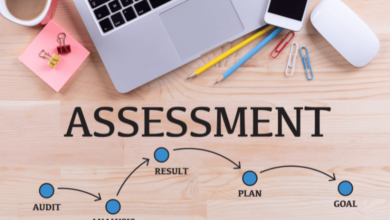How to Write a Rhetorical Analysis Essay

In academic and persuasive writing, few tools are as powerful and essential as the art of rhetoric. At its core, rhetoric is the art of using language to persuade, inform, or entertain. It’s the skillful orchestration of words, ideas, and emotions that has driven countless speeches, essays, and debates throughout history. A rhetorical analysis essay, therefore, serves as a window into this intricate world of communication, inviting readers to delve deep into the nuances of persuasion and meaning.
Exploring the nuances of rhetorical analysis empowers students to decode persuasive techniques and cultivate critical thinking skills, rendering the idea of pay someone to write my essay less appealing when they realize the value of independently crafting insightful and engaging analyses. Imagine dissecting a painting to understand the techniques the artist used to evoke emotions or interpret a theme. Similarly, a rhetorical analysis essay involves dissecting a piece of communication—whether it’s a speech, an article, an advertisement, or any form of text—into its constituent parts. It’s an analytical exercise that goes beyond merely summarizing the content; instead, it examines how the author employs various rhetorical devices, such as ethos, logos, and pathos, to craft a compelling and convincing argument. By breaking down the strategies used, a rhetorical analysis essay uncovers the hidden layers of influence that shape our perceptions and decisions as readers or listeners.
In an age characterized by information overload and swift digital interactions, the ability to critically assess and decode messages is paramount. Understanding rhetorical analysis equips individuals with a powerful set of tools to navigate this sea of information effectively. Whether you’re a student striving to dissect the persuasive techniques of a historical speech or a professional evaluating the impact of an advertisement campaign, the skill to recognize and analyze rhetoric enhances your ability to engage with content on a deeper level. It empowers you to question not only what is being said, but also how it’s being said, and why it’s being said in that particular way.
The journey of mastering rhetorical analysis can be both enlightening and challenging. Recognizing the need for a comprehensive roadmap, the purpose of this article is to serve as a guiding light for those venturing into the world of rhetorical analysis essays. From novices to experienced writers, this step-by-step guide aims to demystify the process, breaking it down into manageable stages. By exploring the art of dissecting communication, readers will be equipped with the tools to not only craft insightful and engaging essays but also to cultivate a deeper appreciation for the power of language.
Rhetoric and Its Importance
Rhetoric, often referred to as the “art of persuasion,” is the skill of using language effectively to communicate, influence, and persuade an audience. Rooted in ancient Greece and Rome, rhetoric has shaped the way we convey ideas, inspire change, and construct arguments. Its importance lies not only in its historical significance but also in its contemporary relevance. In a world saturated with information and opinions, understanding rhetoric empowers individuals to navigate through complex messages, recognize manipulation, and engage critically with the ideas presented to them.
A rhetorical analysis essay acts as a lens that magnifies the intricate threads of persuasive communication. Its purpose extends beyond a mere summary of the text; it involves dissecting the tools employed by the author to communicate effectively. Such an analysis serves a dual purpose: it deepens the reader’s comprehension of the message and illuminates the strategies used to convey that message. By understanding how ethos, logos, and pathos work in harmony, readers can uncover the layers of intent behind the communication, revealing the author’s purpose and the techniques they’ve harnessed to achieve it.
Ethos refers to the credibility and authority of the speaker or writer. It’s the sense of trustworthiness and expertise that the audience attributes to the communicator. In a rhetorical analysis, evaluating ethos involves considering the background, qualifications, and reputation of the speaker. Furthermore, it includes assessing the use of tone, style, and language to establish a connection between the speaker and the audience, cultivating a sense of shared values and beliefs.
Logos centers on the logical appeal of a text or speech. It involves the use of reasoning, evidence, and sound arguments to persuade the audience. In rhetorical analysis, examining logos entails identifying the main arguments presented, dissecting the evidence used to support those arguments, and evaluating the overall coherence and effectiveness of the logical structure. This component is crucial in assessing how well the author’s ideas align with their intended message.
Exploring the complexities of rhetorical analysis empowers college students to decipher persuasive techniques and nurture critical thinking skills, fostering a deeper appreciation for the ability to hire someone to write my college essay.
Pathos taps into the emotional persuasion. It’s about evoking feelings, empathy, and reactions in the audience. When analyzing pathos, one delves into the language choices, imagery, and storytelling techniques employed by the author. By exploring the emotional triggers and responses generated by the text, readers can uncover the ways in which the author seeks to connect with their audience on a visceral level.
Preparing for Rhetorical Analysis
Choosing the right text or speech is pivotal in the rhetorical analysis process. It’s important to select a piece that is rich in rhetorical devices and presents a clear argument or message. Whether it’s a historic speech, a contemporary article, or an advertisement, the chosen piece should offer ample material for analysis.
The context in which a text or speech was created significantly influences its rhetorical strategies. Factors such as historical background, cultural norms, and societal issues play a crucial role in shaping the author’s message and approach. Understanding this context is vital for a comprehensive analysis that considers the broader environment in which the communication takes place.
Every piece of communication is tailored to a specific audience. Identifying this audience is integral to understanding the author’s intentions. The tone, language, and appeals used in the text often reflect the characteristics and preferences of the intended readers or listeners. Recognizing the target audience enables a more accurate analysis of how the author seeks to resonate with and persuade their audience.
Analyzing the Rhetorical Appeals
Assessing the speaker’s qualifications, experiences, and credentials that contribute to their authority on the topic. This evaluation sheds light on why the audience should trust the speaker’s words.
Scrutinizing the tone and style adopted by the speaker to determine how they present themselves to the audience. A formal, confident tone might enhance credibility, while an approachable tone could foster a sense of connection.
Carefully parsing the main arguments presented in the text. Evaluating the quality and relevance of the evidence provided to support these arguments. Examining the reasoning used to connect evidence to conclusions.
Assessing whether the logical structure of the arguments is convincing. Does the author employ deductive or inductive reasoning? Does the argument flow logically from point to point, leading the audience to a coherent conclusion?
scrutinizing the language choices and imagery employed by the author to evoke emotional responses. Identifying metaphors, similes, and descriptive language that create vivid mental images.
Delving into the emotions that the author aims to evoke in the audience. Understanding how these emotional triggers align with the overall message and purpose of the communication.
Structural Analysis
In the intricate tapestry of a text or speech, its structural framework serves as the scaffolding that supports the message, guiding the audience through a journey of ideas, persuasion, and reflection. Just as a building stands on its foundation, a text or speech is constructed upon its structure. Distinguishing the introduction, body paragraphs, and conclusion is the first step in navigating this framework. The introduction sets the stage, the body elaborates on the argument, and the conclusion wraps up the discourse. The heart of any piece lies within its central argument, the main idea that the author seeks to convey. This foundational thesis or argument drives the structure, shaping the content that follows and giving the piece its overarching purpose.
An effective introduction captures the audience’s attention from the outset. It might employ a captivating anecdote, a thought-provoking question, a surprising fact, or a powerful quotation. Analyzing these attention-grabbing techniques reveals the author’s intention to engage and captivate the audience’s interest.
Beyond its engaging introduction, the opening of a text or speech lays the groundwork for what’s to come. The main topic or argument is introduced, often in a clear and concise manner. This introduction serves as the springboard that launches the audience into the heart of the author’s discourse.
The body paragraphs unpack the argument, breaking it down into its constituent parts. Each paragraph typically focuses on a main point, which is then supported by evidence, examples, and reasoning. Identifying these main points and the evidence used provides insights into the author’s line of reasoning.
The body of the text unfolds like a narrative, with ideas building upon one another in a coherent sequence. Evaluating how the author arranges these ideas showcases their skill in constructing a logical progression. Analyzing the connections between paragraphs and how the argument evolves enhances our understanding of the persuasive journey.
The conclusion serves as the destination—a place to reflect on the journey and tie together the threads of the argument. Summarizing the key points reiterated throughout the piece reinforces the core message. Reiterating the thesis at this juncture brings the argument full circle.
Some pieces conclude with a call-to-action, urging the audience to take specific steps or embrace a particular viewpoint. Alternatively, a memorable closing statement might leave a lasting impression. Examining these aspects sheds light on the author’s desired impact and the strategies employed to achieve it.
Language and Style Analysis
The language used in a text or speech goes beyond mere words; it carries a tone and mood that influence how the message is received. Examining the tone—whether it’s formal, casual, empathetic, or authoritative—provides insights into the author’s attitude towards the subject matter. Likewise, the mood—whether it’s optimistic, somber, or persuasive—shapes the emotional atmosphere of the piece.
Rhetorical devices are the painter’s palette of the writer. Metaphors, similes, repetition, and other linguistic tools add depth and dimension to the text. Analyzing their usage exposes the author’s intention to evoke specific emotions, create vivid imagery, and amplify the impact of their words.
The style of writing or speaking is like a fingerprint—a unique mark that sets the author’s work apart. It encompasses choices in sentence structure, vocabulary, rhythm, and syntax. Evaluating the style offers insights into how the author seeks to connect with the audience, establish authority, and convey their message effectively.
Considering the Context
Every piece of communication is a product of its time and context. The historical, social, and cultural backdrop shapes the themes, ideas, and perspectives presented. Understanding this context provides a lens through which to interpret the author’s choices and intentions.
The context in which a piece is created influences the rhetorical strategies harnessed by the author. Political climate, societal values, and cultural norms impact the way an argument is framed, the appeals chosen, and the overall tone of the communication.
Context doesn’t just shape the author’s intent; it also molds the audience’s reception. Considering the context in which the audience encounters the piece helps us understand how they might interpret and respond to it. Reflecting on this aspect enhances our appreciation of the dynamic relationship between the author, the communication, and its audience.
As we dissect the structure, language, and context of a text or speech, we embark on a journey of unraveling the layers that comprise its rhetorical fabric. Through this analysis, we discover the strategic interplay between structure, language, and context, uncovering the tools wielded by authors to influence, persuade, and provoke thought. This journey leads us deeper into the realm of rhetorical analysis, where the pursuit of understanding uncovers the artistry behind communication.






